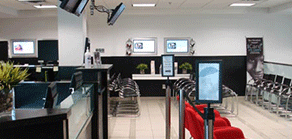
ABOUT OCC EYECARE
The Ophthalmic Consultant Centres Inc. (OCC) and Canadian centre for Advanced Eye Therapeutics Inc. (CCAET) are dedicated to providing the best treatment and care for our patients. At our facilities, our highly qualified and experienced team of ophthalmologists use leading techniques and cutting edge technologies to give patients world class eye care.
WORKING HOURS
MON 7:00 AM - 4:00 PM
TUE 7:00 AM - 4:00 PM
WED 7:00 AM - 4:00 PM
THR 7:00 AM - 4:00 PM
FRI 7:00 AM - 4:00 PM
SAT - SUN CLOSED
Copyright © 2017 OCC Eyecare. All Rights Reserved.
Created by Printam
Copyright � 2018 OCC Eyecare. All Rights Reserved.
Revision date Nov 8,2023

